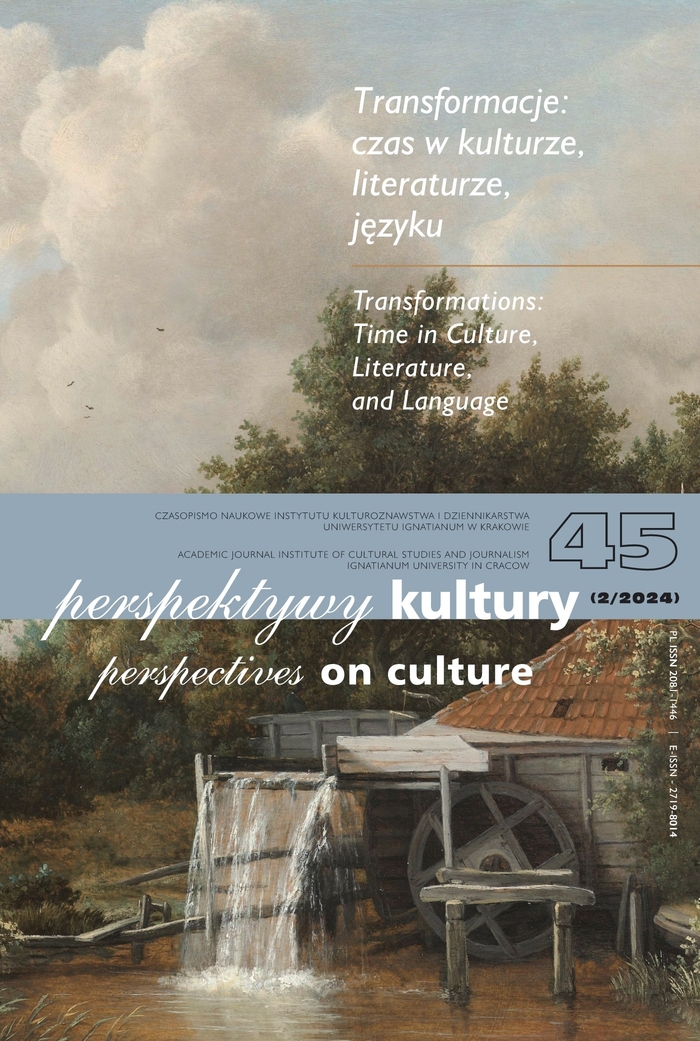ransformations within (Existentialist) Invariance in Ariel by Marina Carr with Reference to John Millington Synge’s Riders to the Sea
Abstract
This article is a comparative analysis of Marina Carr’s Ariel (2002) and John Millington Synge’s Riders to the Sea. The main research context comes from common critical treatments of Carr’s oeuvre within the scope of Synge’s influences. The plays discussed in this essay have not been subject to comparative studies before (to the best of the author’s knowledge). The main argument consists in examining the loci of invariance and their transformations with reference to themes, characters’ roles, and their relationships, which will be compared in terms of notions of necessity, generational suffering, reliance on the worldly, and death in the unknown realm, partly treated within existentialism.
References
Ajala, J. D. (1985). Similarities between J. M. Synge’s Riders to the Sea and F. G. Lorca’s Blood Wedding. CLA Journal, 28 (3), 314–325.
Carr, M. (2002) Ariel. 2002.
Elrahman, Haitham. (2021). Irishness, female subjectivity, domestic relation, and landscape as manifested in Carr’s The Mai & Ariel. JWADI, 32 (10), 149–186.
González-Chacón, M. del Mar. (2007). Re-imagining ourselves from scratch: Marina Carr’s unmapped territories in Ariel. In A. Altuna and C. Andreu (Eds.) Re-Writing Boundaries: Critical Approaches in Irish Studies. Barcelona: Promociones y Publicaciones Universitarias, S.A., 191–197.
Hewitt, S. (2017). J.M. Synge, Modernism, and Political Protest. PhD thesis. University of Liverpool.
Koneczniak, G. (2011). Women on Stage and the Decolonisation of Ireland. Counter-discursiveness in the Drama of the Irish Literary Revival (1892–1926). Toruń: Wydawnictwo Naukowe Uniwersytetu Mikołaja Kopernika.
Mesquita de, Z. R. C. (2010). Violence and hope in Ariel, by Marina Carr. lha do Desterro Florianópolis 58 289–308.
O’Brien, E. J. (1911). Introduction. In J. M. Synge. Riders to the Sea. Boston: John W. Luce & Company, vii–xi.
Özbey, K. V. (2023). Glocalisation and adaptation in Marina Carr’s By the Bog of Cats… and Blood Wedding. Soylem 8 (2), 398–420.
Roche, A. (1995). Woman on the threshold: J.M. Synge’s The Shadow of the Glen, Teresa Deevy’s Katie Roche and Marina Carr’s The Mai. Irish University Review 25 (1), Silver jubilee issue: Teresa Deevy and Irish women playwrights, 143–162.
Saddlemyer, A. (2007) John Synge in context; or, re-positioning Synge: the point of balance. In W. Huber, M. Böss, C. Maignant, H. Schwall (Eds.) Ireland – Representation and Responsibility. WVT Trewir, 13–30.
Synge, J. M. (1911). Riders to the Sea. Boston: John W. Luce & Company.
Copyright (c) 2024 Perspectives on Culture

This work is licensed under a Creative Commons Attribution-NoDerivatives 4.0 International License.
Autor, zgłaszając swój artykuł, wyraża zgodę na korzystanie przez Wydawnictwo Uniwersystet Ignatianum z utworu na następujących polach eksploatacji:
- utrwalania utworu w formie papierowej, a także na nośniku cyfrowym lub magnetycznym;
- zwielokrotnienia utworu dowolną techniką, bez ograniczenia ilości wydań i liczby egzemplarzy;
- rozpowszechniania utworu i jego zwielokrotnionych egzemplarzy na jakimkolwiek nośniku, w tym wprowadzenia do obrotu, sprzedaży, użyczenia, najmu;
- wprowadzenia utworu do pamięci komputera;
- rozpowszechniania utworu w sieciach informatycznych, w tym w sieci Internet;
- publicznego wykonania, wystawienia, wyświetlenia, odtworzenia oraz nadawania i reemitowania, a także publicznego udostępniania utworu w taki sposób, aby każdy mógł mieć do niego dostęp w miejscu i czasie przez siebie wybranym.
Wydawca zobowiązuje się szanować osobiste prawa autorskie do utworu.





